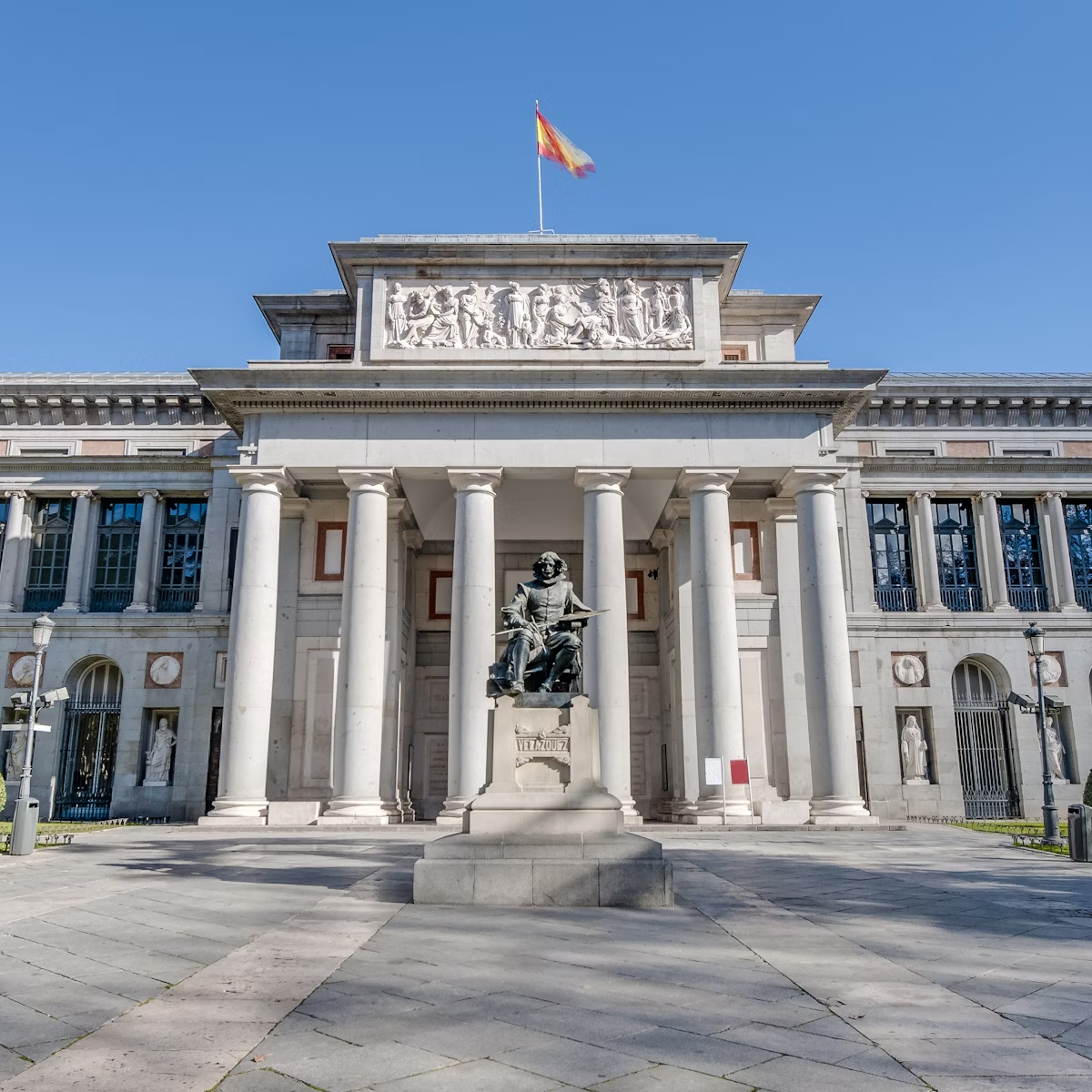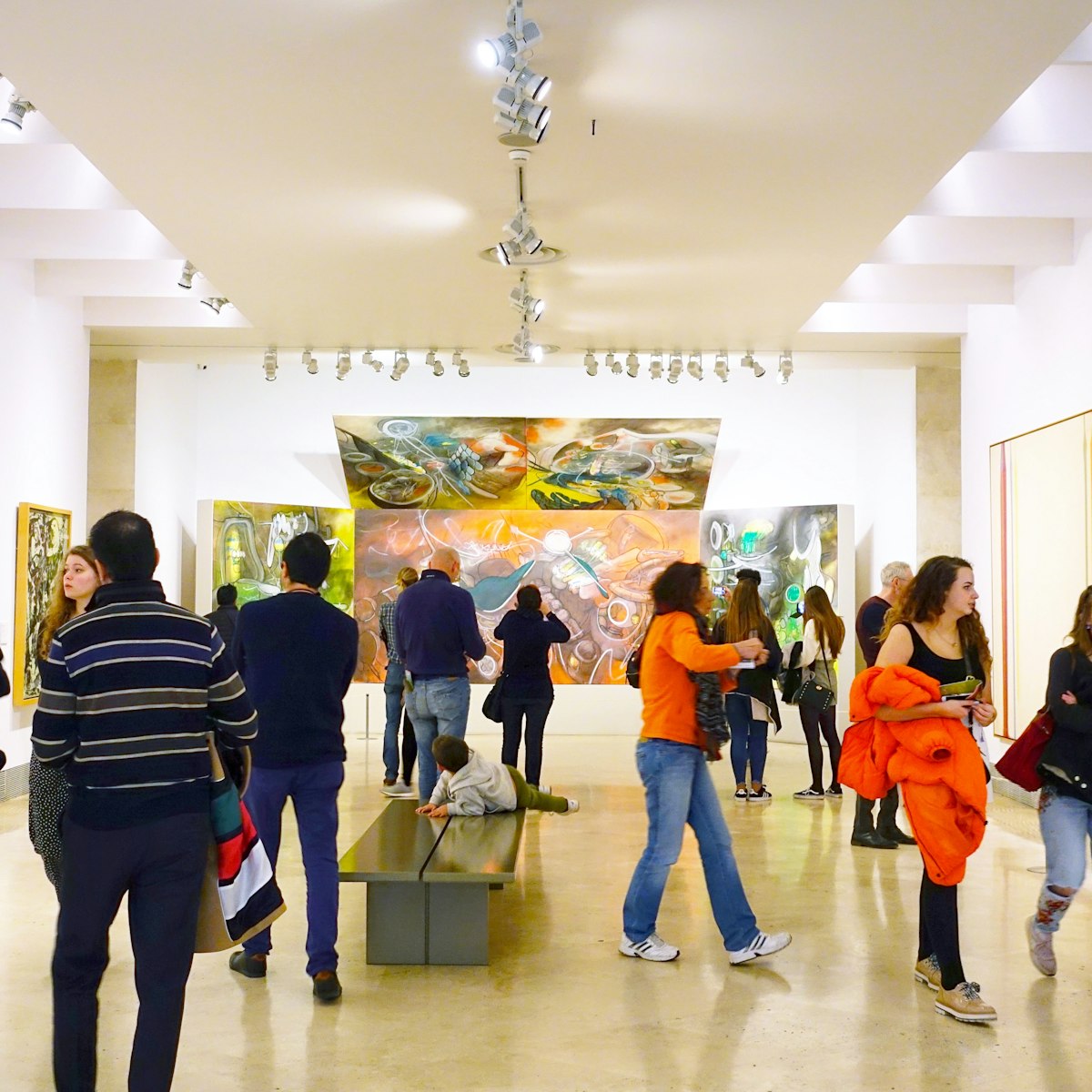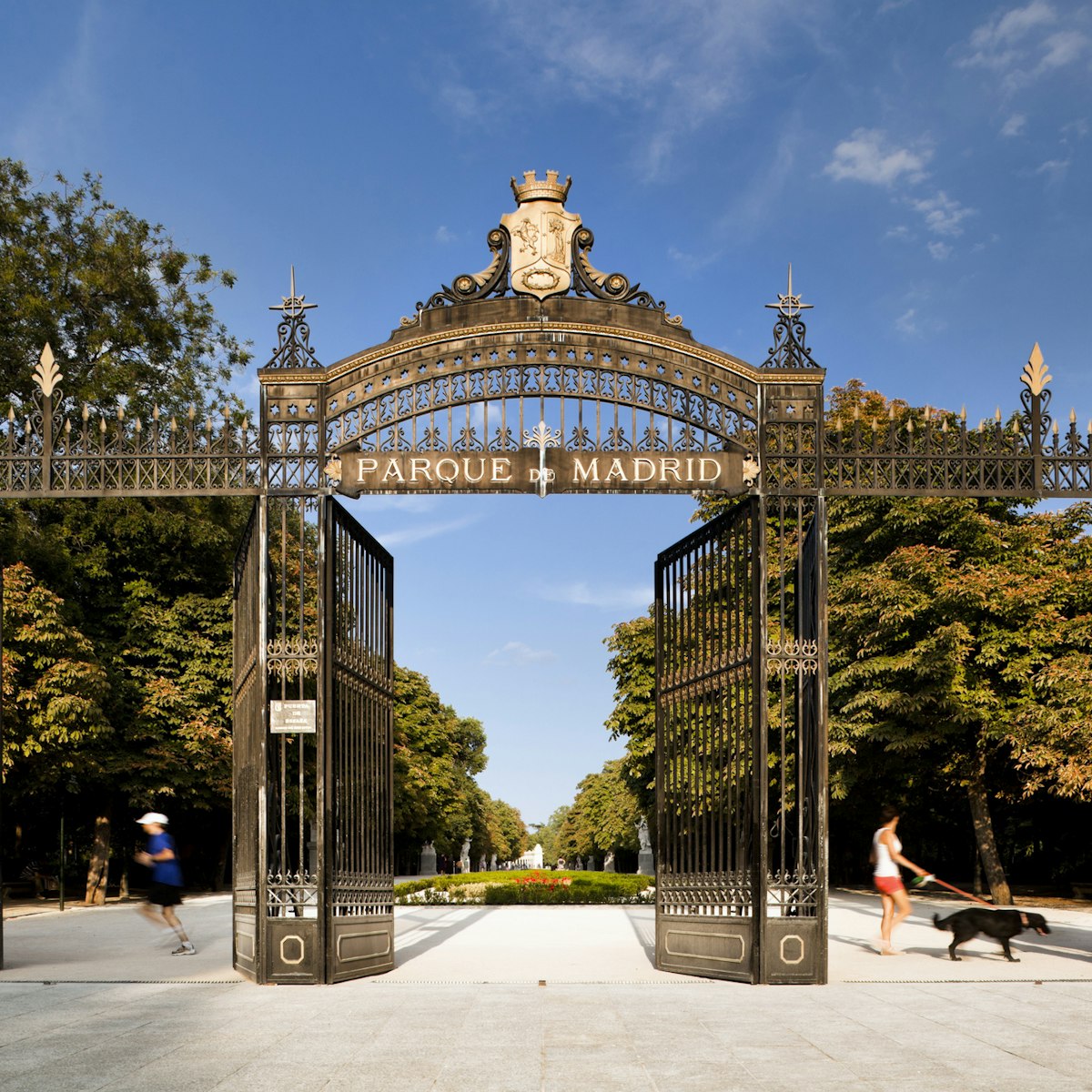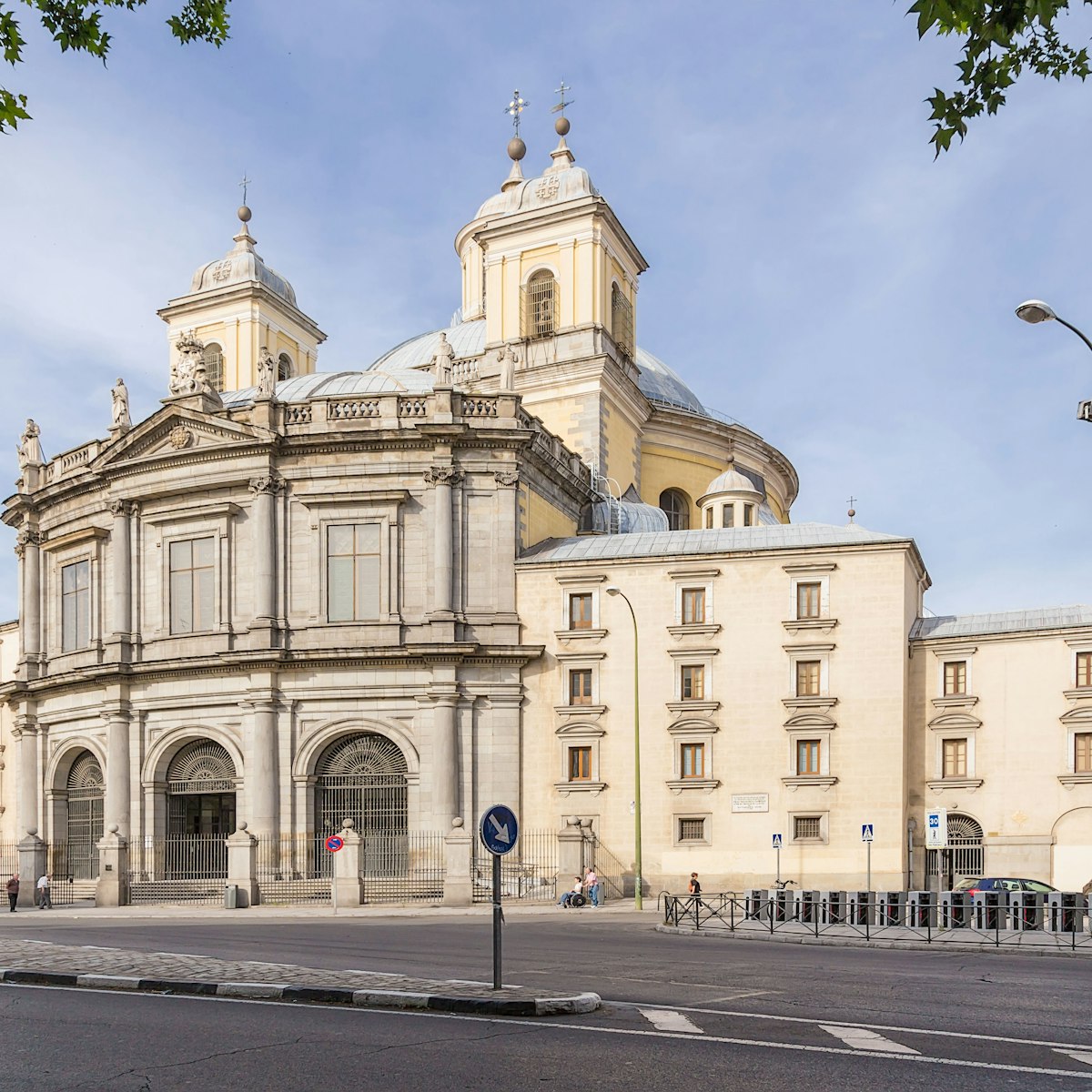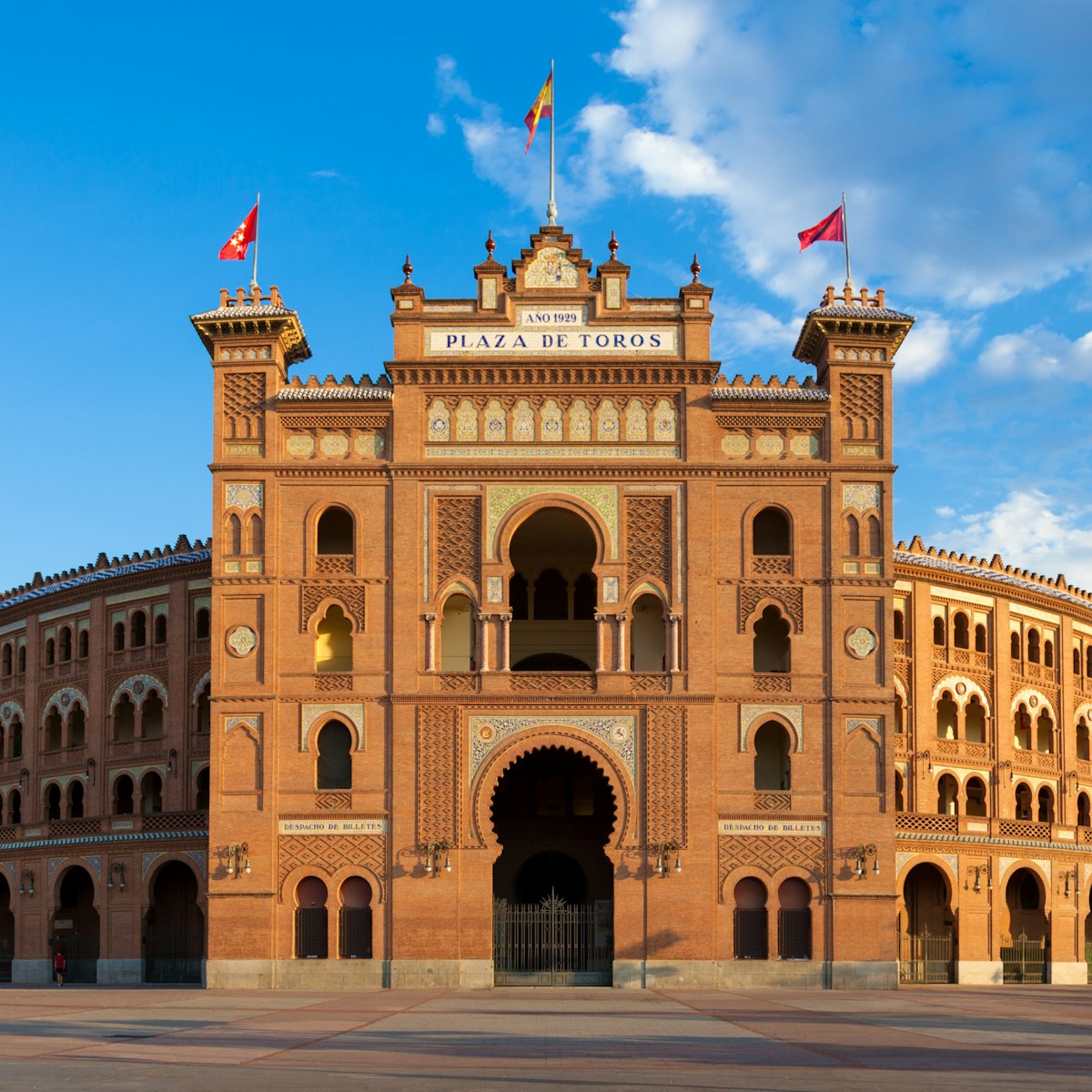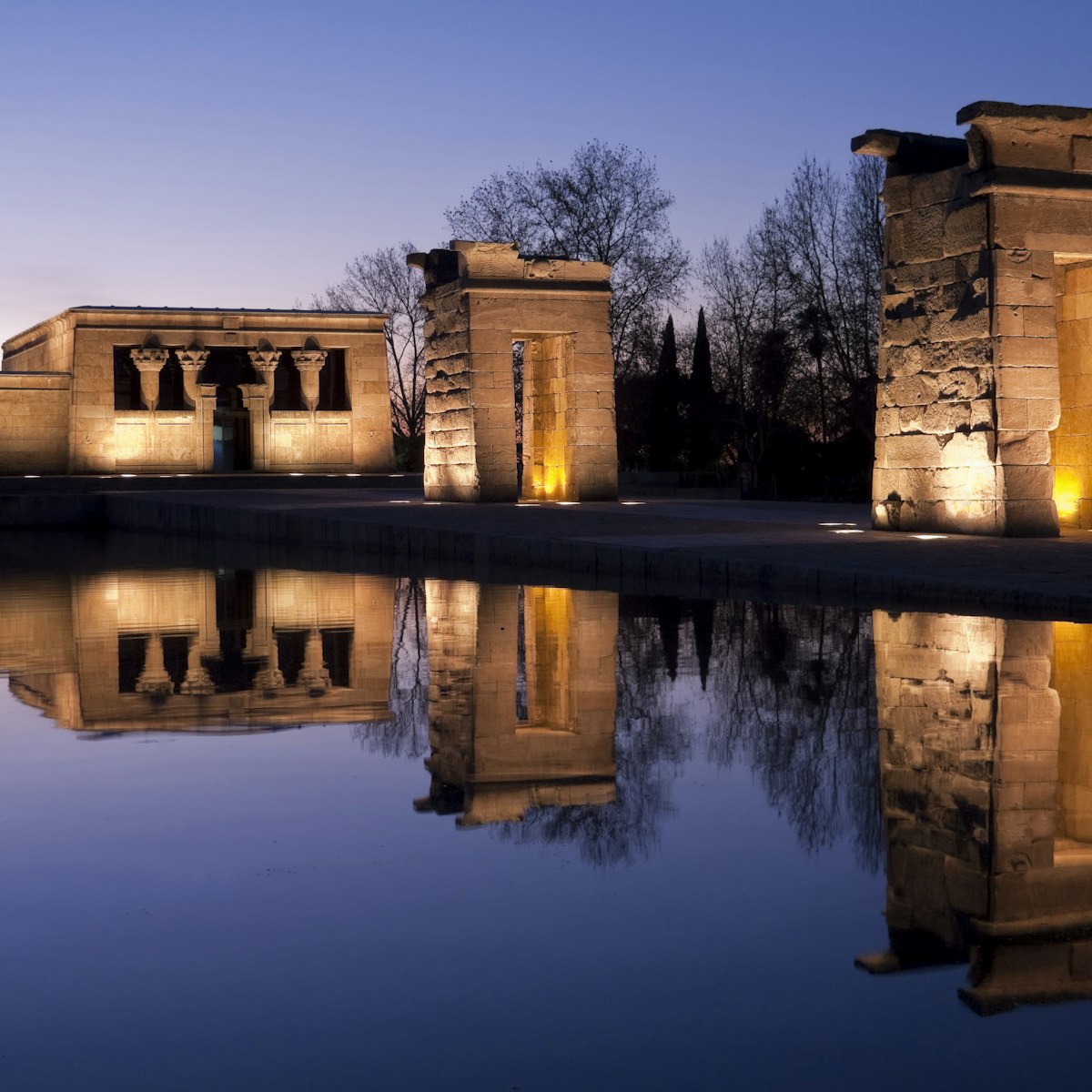Home to the majestic monastery and palace complex of San Lorenzo de El Escorial, this one-time royal getaway rises up from the foothills of the mountains that shelter Madrid from the north and west. Although it attracts its fair share of foreign tourists, this prim little town and its fresh, cool air has been drawing city dwellers here since the complex was first built on the orders of King Felipe II in the 16th century.
The monastery's main entrance is to the west. Above the gateway a statue of St Lawrence stands watch, holding a symbolic gridiron, the instrument of his martyrdom (he was roasted alive on one). From here you'll first enter the Patio de los Reyes (Patio of the Kings), which houses the statues of the six kings of Judah.
Directly ahead lies the sombre basilica. As you enter, look up at the unusual flat vaulting by the choir stalls. Once inside the church proper, turn left to view Benvenuto Cellini's white Carrara marble statue of Christ crucified (1576). The remainder of the ground floor contains various treasures, including some tapestries and an El Greco painting – impressive as it is, it's a far cry from El Greco’s dream of decorating the whole complex. Then head downstairs to the northeastern corner of the complex.
You pass through the Museo de Arquitectura and the Museo de Pintura. The former tells (in Spanish) the story of how the complex was built, the latter contains a range of 16th- and 17th-century Italian, Spanish and Flemish art.
Head upstairs into a gallery around the eastern part of the complex known as the Palacio de Felipe II or Palacio de los Austrias. You'll then descend to the 17th-century Panteón de los Reyes (Crypt of the Kings), where almost all Spain's monarchs since Carlos I are interred. Backtracking a little, you'll find yourself in the Panteón de los Infantes (Crypt of the Princesses).
Stairs lead up from the Patio de los Evangelistas (Patio of the Gospels) to the Salas Capitulares (Chapter Houses) in the southeastern corner of the monastery. These bright, airy rooms, with richly frescoed ceilings, contain a minor treasure chest of works by El Greco, Titian, Tintoretto, José de Ribera and Hieronymus Bosch (known as El Bosco to Spaniards).
Just south of the monastery is the Jardín de los Frailes, which leads down to the town of El Escorial (and the train station), and contains the Casita del Príncipe, a little neoclassical gem built in 1772 by Juan de Villanueva under Carlos III for his heir, Carlos IV.
